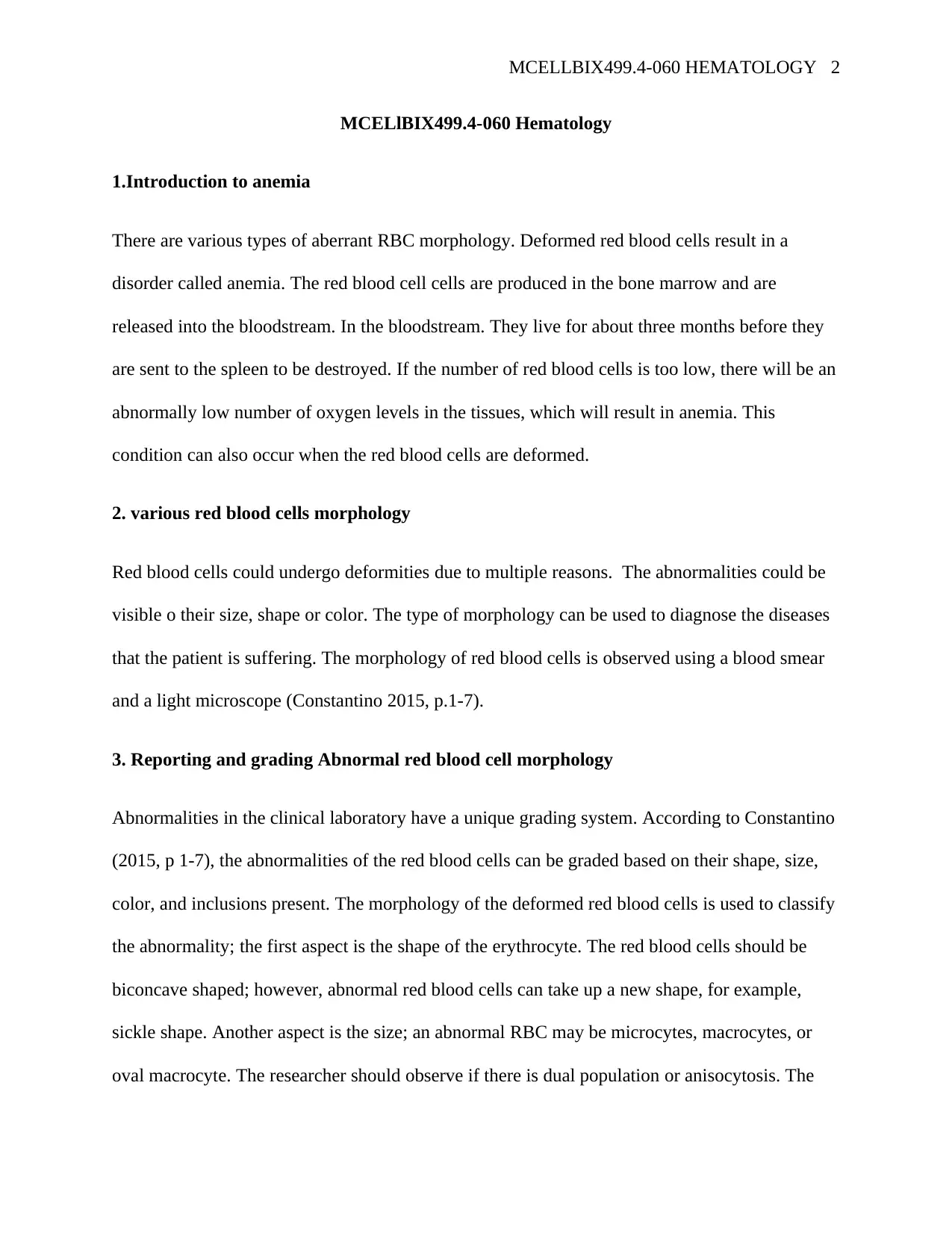MCELBIX499.4-060 Hematology Report: RBC Morphology Analysis
VerifiedAdded on 2022/09/06
|4
|542
|17
Report
AI Summary
This report, focusing on hematology, provides an in-depth analysis of red blood cell (RBC) morphology and associated abnormalities. It begins with an introduction to anemia and the role of RBCs, followed by a discussion of various RBC deformities and their impact. The report emphasizes the importance of grading abnormal RBC morphology based on shape, size, color, and inclusions. It also covers the causes of these abnormalities, including genetic factors, underlying illnesses, and environmental changes, and their clinical consequences, such as the risk of thalassemia, blood loss, hemolysis, and bone marrow failure. The report highlights the significance of careful observation in diagnosing conditions, especially in children, and concludes with a question about the potential of bone marrow transplants as a treatment. References to relevant literature are also included to support the findings.
1 out of 4






![[object Object]](/_next/static/media/star-bottom.7253800d.svg)